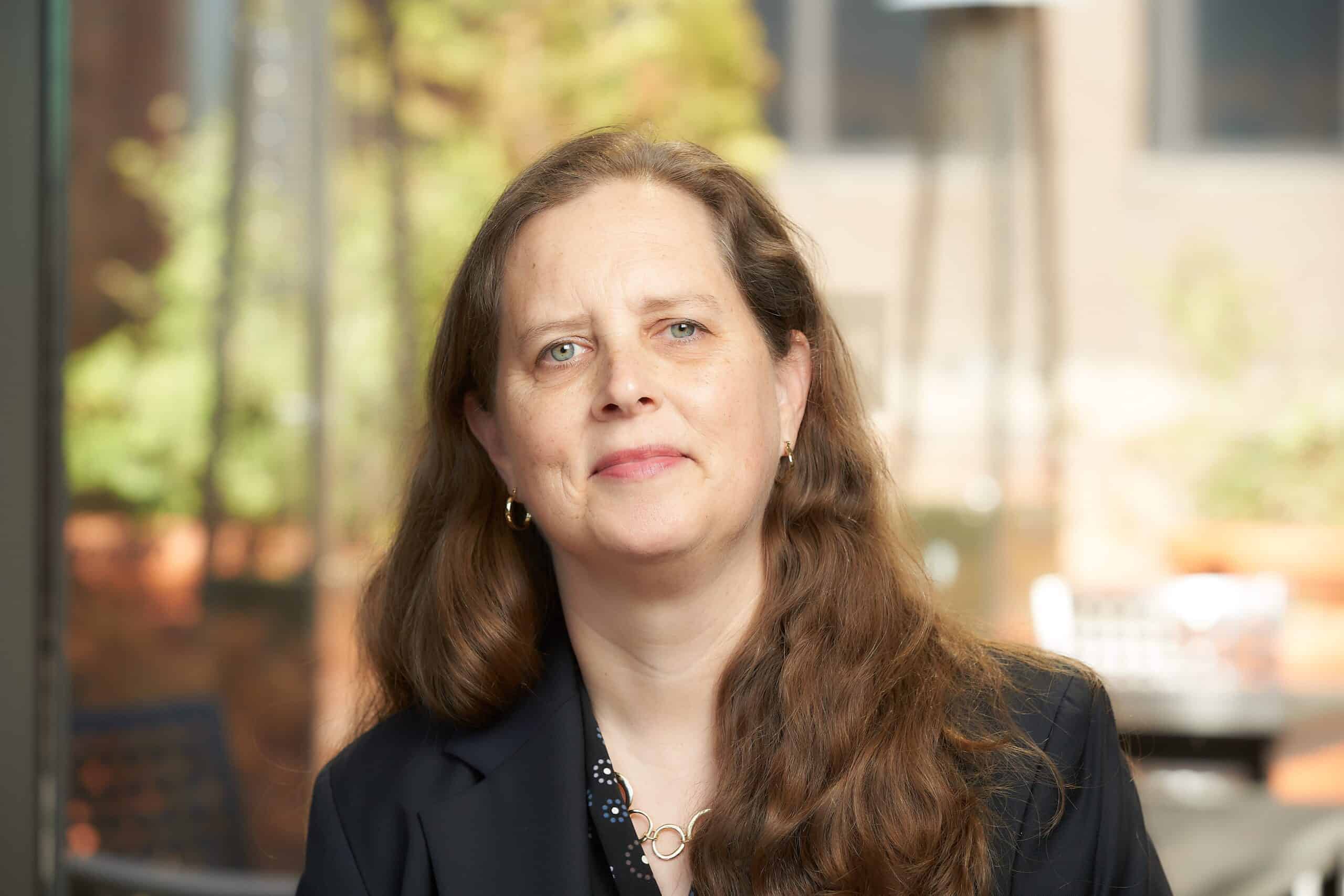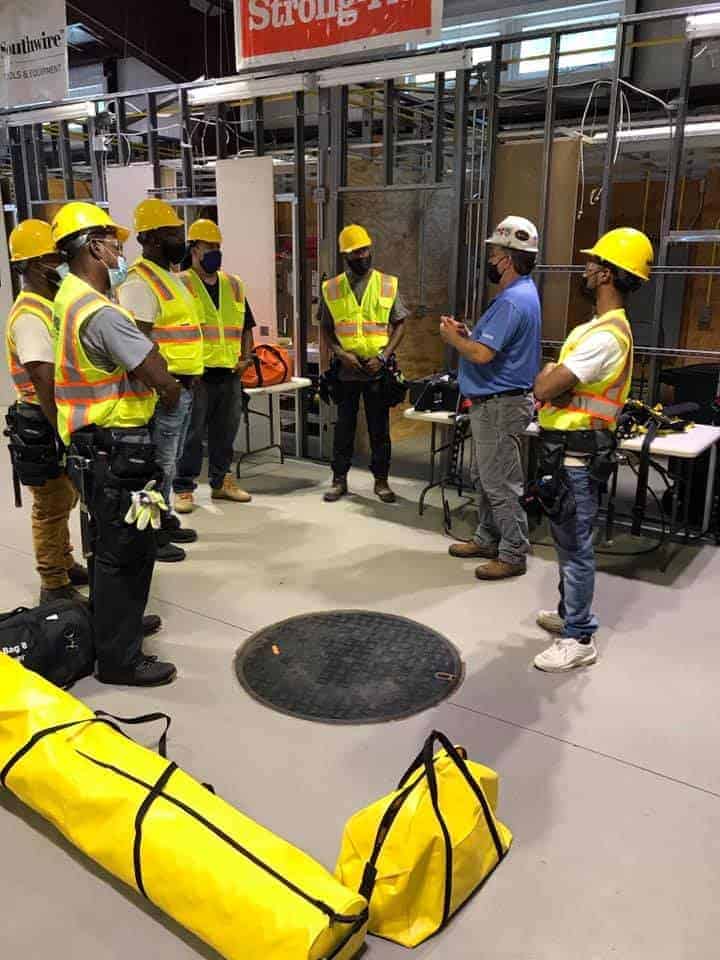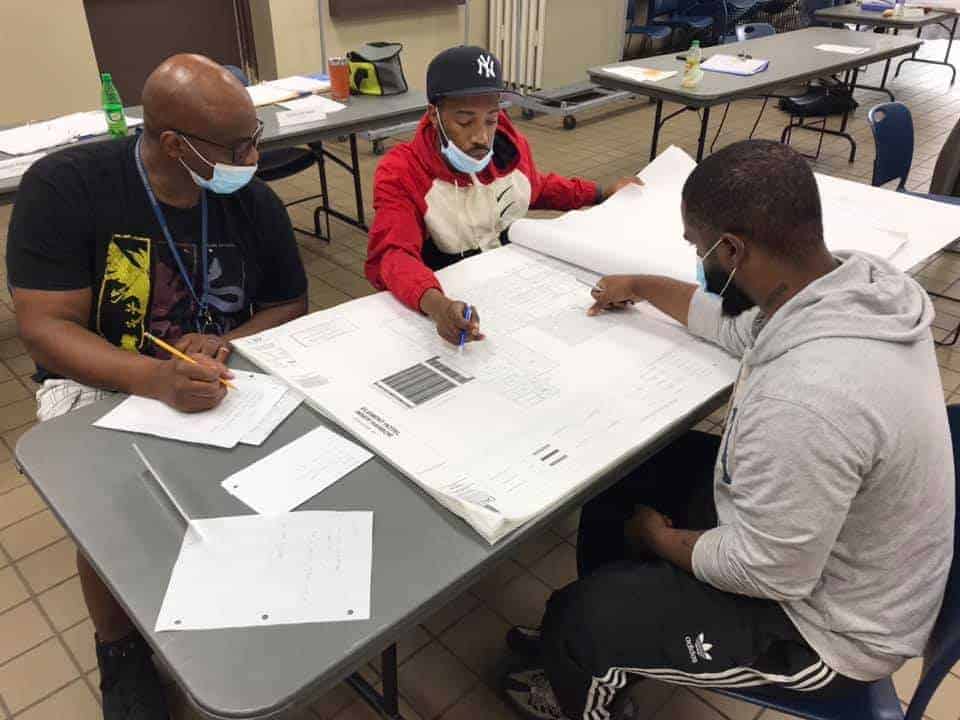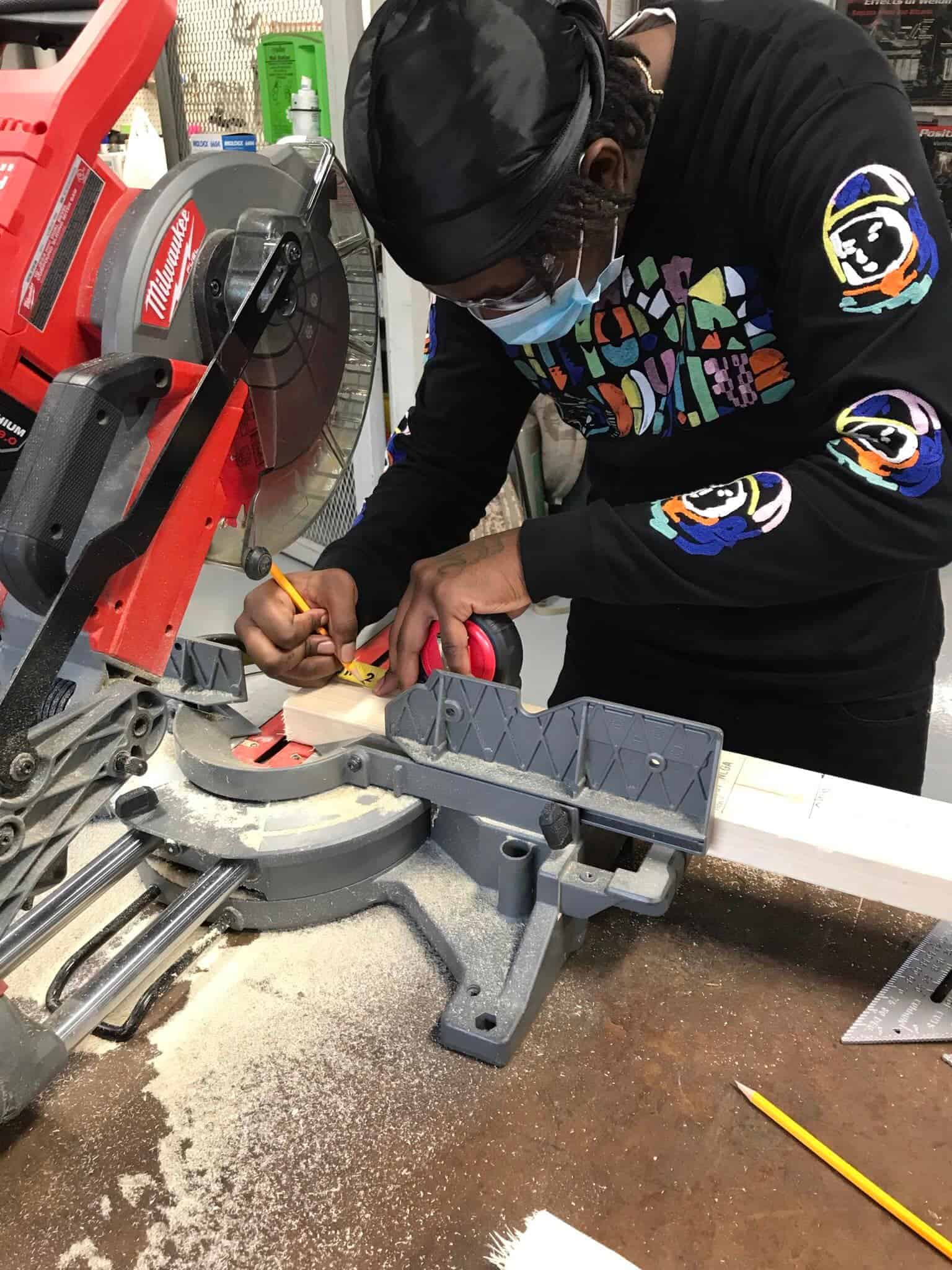Deep Dive: Understanding Employment in Syracuse
CenterState CEO’s Aimee Durfee sat down with our Communications & Grants Specialist Maximilian Eyle to discuss the evolving nature of employment and the steps being taken to make careers more accessible for CNY residents.
Published May 9th, 2022
Aimee Durfee moved to Central New York two years ago from the San Francisco Bay Area, where she worked at Jewish Vocational Service, overseeing 15 different job training programs. Now she serves as CenterState CEO’s Director of Workforce Innovation, helping to connect untapped talent to career pathways among CNY residents and businesses. Durfee’s career spans more than 20 years of anti-poverty, workforce development, and asset building work. She also has a background as an attorney, specializing in employment law. The Gifford Foundation has worked closely with Durfee as one of the funders behind CenterState CEO’s Work Train initiative.

Aimee Durfee is the Director of Workforce Innovation at CenterState CEO.
We sat down together to better understand the employment landscape in Central New York. How can employers attract and retain candidates? How is The Great Resignation affecting Syracuse? What strategies are being used to help get people back to work? Her efforts with such initiatives as Syracuse Build, Work Train, and Syracuse Surge reveal important lessons about how employment standards are evolving and how we can best adapt.
Max: Let’s start with the basics – what exactly does CenterState CEO do?
Aimee: CenterState CEO is an economic development strategist, business leadership organization and chamber of commerce for CNY. We are focused on bringing economic development to the region but in a way where everyone can benefit from that growth and prosperity. Work Train is a program of CenterState CEO; as a workforce intermediary we are supported by the Work Train Funder Collaborative, of which the Gifford Foundation is a member. From 2014 through 2020, Work Train helped roughly 1000 individuals secure employment. Although we had to pause some of our programming during the first part of the pandemic, we expect that an additional 700 people will have received professional training through our partner programs in 2021 and 2022.

An important aspect of Work Train’s efforts are connecting job seekers with union apprenticeships, and providing the support necessary to help them graduate from those programs.
Through Work Train, CenterState CEO brings together employers who are looking for workers, training providers and community organizations, and we connect with job seekers and workers to understand their challenges. We design and fund programs that address gaps in the system. We are looking for opportunities for connect people to careers and good wage employment, and we are looking to diversify industries that are traditionally white and male.
Most of all, we help people identify their untapped talent. We know there are people in the community who have skills that could be used in a career that they might not know about, and employers don’t know how to connect with them. Our programs help build on those skills and bridge these gaps.
Max: Can you give an example of some of the programs you have launched?
Aimee: Syracuse Build is a great example of this. This Mayoral initiative focused on the construction industry was incubated with our team’s support. Now the initiative is led by a highly talented Director and Manager and is housed at CNY Works.
Syracuse Build helps people access opportunities to get into construction, and is a place where employers and unions can find a pool of interested and qualified individuals.
We are also incubating workforce programs with partners as part of the Mayor’s Syracuse Surge strategy, which is related to coding and high-tech manufacturing. There’s also a program for digital customer service/call center work, as well as manufacturing training programs. For both initiatives, we raise funds and then target that support to specific projects.
Max: Are there many opportunities for employment here in Syracuse? If so, what are the main barriers that prevent people from accessing those jobs?
Aimee: There are significant job opportunities for people in Central New York. The question is whether opportunities are at a wage level that can sustain a family, whether people can find childcare so they can actually go to the job, and whether they have adequate transportation to get to the workplace.
What we’ve found is that a lot of employment opportunities are outside of Syracuse, and some are not on a bus line or shifts are not aligned with bus schedules. Additionally, we know that child care is hard to access at hours that align with all shifts.
There are a lot of challenges when you’re talking about people in poverty trying to get access to employment. Applying to a job is just one layer of it. We are working with employers on things like, ‘how long does it take to fill out your application? Can you fill out your application on a phone? Do you say in your job announcement what time and where the job is?’ If the employer says, ‘we are on a bus line, this is what time the shift starts, and this is what the job is,’ then people are more likely to apply.
The other piece is turnover: when people get into a job and then it isn’t what they thought it was, it’s too far away, or it’s not a high quality job, or their childcare stops functioning, or they can’t maintain a car because they aren’t getting paid enough to afford gas – all this stuff is ‘outside of the job’ but it heavily impacts how people can access those jobs.
There’s also bias and discrimination at different points in the process. Employers need to look at their hiring pools, who is getting hired and who is advancing. Are their job requirements related to the skills required for the job? Is the work environment welcoming and diverse?
If you’re talking about people getting out of poverty, you’ve got to advance. You have to have the ability to save. You have to have health insurance. And these are also aspects of a job that attracts talent. So that’s the question with many of these jobs – do they have any of those things that both support workers and make an employer more attractive in a competitive employment marketplace?
Max: Tell me more about the role transportation plays in securing employment. Is that something that you are working on?
We have a program called Vehicles to Work which we started inside of Syracuse Build, which is a way for people to purchase and repair cars, and to regain their driver’s license. This is critical because if you want to work in construction, you need to have a car. That program is up and running with many partners, and we are learning a lot about the challenges people face getting into a vehicle.

Work Train helps advise employers on how to make their applications more transparent and accessible to potential hires.
The other program we are getting going is a vanpool commuter initiative. We were able to raise some money to bring Enterprise Rent a Car here to implement vanpool programs, which they do all over the country. The vanpools will take people from specified points – primarily inside of Syracuse — out to employment opportunities which are further outside of the City. That is a very exciting project, and. the goal is to integrate it into the Centro system after three years.
Transportation is so complex and we are just scratching the surface, but we are trying some new things that we think can be scaled.
Max: What are some examples of local employers who have made strategic adjustments to their hiring practices?
Aimee: Loretto is such a great example. We started working with them several years ago to implement a coach. The coach addresses challenges with people once they get into the job including transportation, childcare, workplace communication, understanding what a union is, reading a paycheck, and navigating life on the job. Having that person in that role over several years has allowed them to improve retention.
Another success story is within Syracuse Build. We created a program with the support and leadership of many funders, unions and partners –called “Pathways to Apprenticeship”. We started working with the unions and we spent time with them to better understand what skills were most important, asking them, ‘what are you looking for? What do you actually need? How can we build this program so that it is producing the people that you are looking for?
We also have champions within the labor movement who are very focused on bringing in more women and people of color. So far, every Pathways graduate has been accepted/invited into a union apprenticeship, a union boot camp, or a union membership; 93% are people of color and more than 20% are women. We are already getting interest from other parts of the state wanting to replicate it.
Max: What are some questions that employers should ask themselves? How can they assess if their workplace practices are where they should be?
Aimee: Start with the data, and use that to help identify the problems they need to solve. Some employers might evaluate their workforce and recognize the need to bring more diverse talent into their workforce. Are people applying and then falling out of the application process? Or are they not even applying? Where are you physically located and what is the transportation environment?
Why do people leave? Some employers have implemented a “stay” interview, where you talk to people after they have been there awhile about their future at the company. So instead of doing an exit interview after the person has already decided to leave, you get ahead of that process.
Employers should also look at what the career potential is for someone coming into the company and communicate what growth pathways are available. I think that people are looking for careers to support themselves and their families, so if you are attracting people into a job with a certain payrate, what else is there that you can offer people? How can you make your workplace more attractive? How can you make it a place someone would want to stay?
But really to start with the data. If the problem is retention, when do people start to drop off? Is it after 90 days? What’s happening during those first 90 days? What does your onboarding look like?

Max: Is there anything different about the nature of today’s employment opportunities?
Aimee: Some of the advanced manufacturers we work with are more like tech companies than what most people might think of as manufacturing. The whole industry is evolving. Call centers are another area we are focused on– people in these jobs need to be able to navigate multiple platforms, and multiple screens. You need to be able to quickly analyze data, and not only do all of that – you need to be working to solve people’s problems at the same time. So technology is threaded throughout these jobs and ten years ago that wasn’t necessarily the case.
The Syracuse Surge strategy that the mayor is leading, and that we are helping to staff on the workforce side, is really focusing on those opportunities where technology is a piece of the employment world. Many jobs are tech jobs now, and so we approach this work to understand, what are those basic foundational skills that are needed to succeed? The key is training people in foundational digital skills, and it’s important to contextualize that towards particular jobs.
As part of Syracuse Surge, we are also launching a specific software development apprenticeship that is highly customized to what tech companies are looking for at entry level coding and QA [quality assurance] jobs. There are some specialized entry level tech skills that people need to start in these roles, but we know other skills can be learned on the job with support and training while people are working. That’s another aspect of today’s economy: you not only have to learn skills – you also have to learn how to learn, and continuously pickup new skills.
One of the ways we are doing this is with apprenticeships. We have found a number of local employers who are willing to bring in people at an entry level. We will provide the apprentices with some training, as well as ongoing support for 12 months while they are working. We are also providing ongoing mentoring support and learning opportunities to those apprentices so they can become successful, as well as a Diversity, Equity and Inclusion workshop series for employers to help build a welcoming environment.
Max: What is your take on The Great Resignation?
Aimee: People want to work. We know this because we’ve had hundreds of people applying for our Pathways to Apprenticeship program for a very small number of spots. People also want to try new things. [The Great Resignation] is an opportunity for people to branch out and see what’s available. I think that’s the most exciting thing about it.
But the challenge is that choices can be limited when you’re trying to make ends meet. There’s a different level of choice for people with resources, credit, and assets if they want to take time off or make a career change. Maybe you have another wage earner in the home. That’s a completely different situation than someone who was working in a low wage job and has been laid off. They want to find something quickly because they need to pay their rent. There’s a big range of lived experiences out there, which is why we aim to design our programs so they are accessible to working people who want to make that change, by providing paid training and apprenticeship opportunities.


